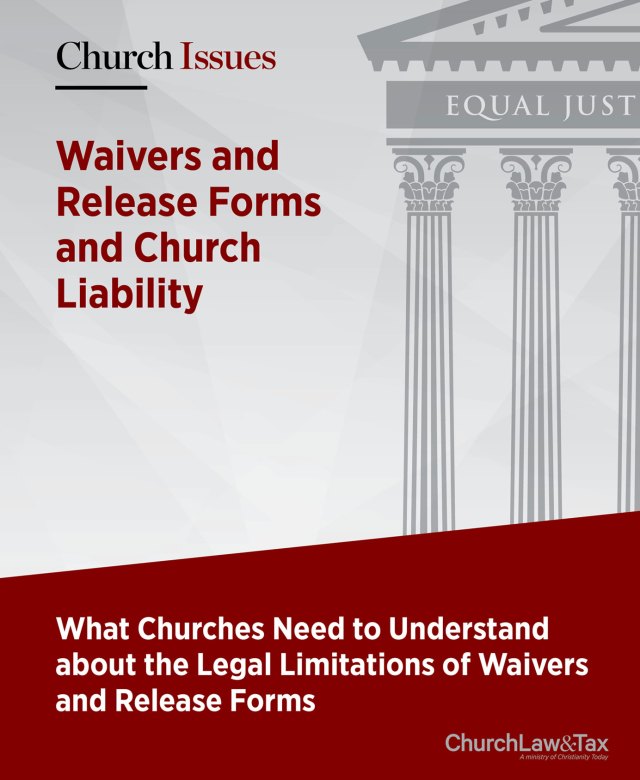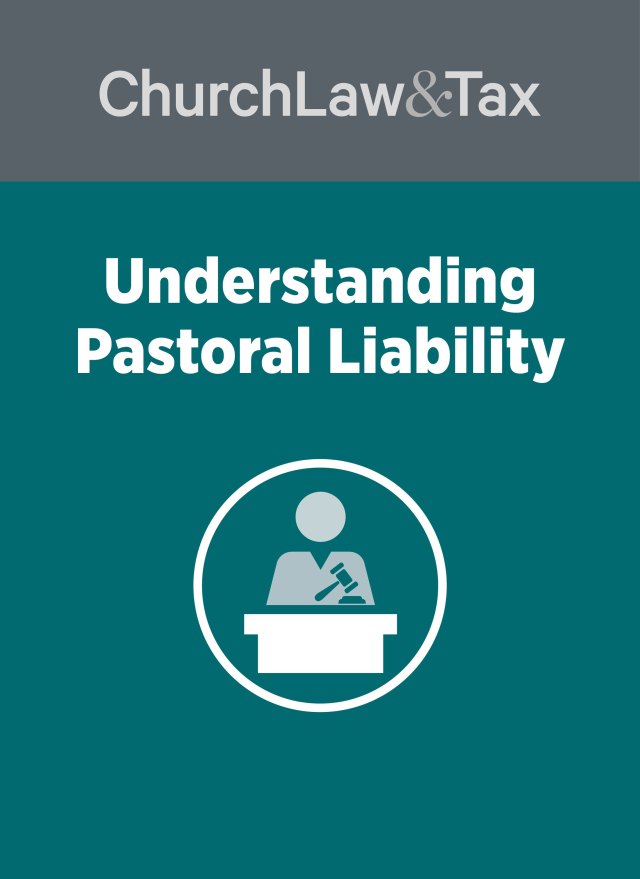Key point 10-16.6. A release form is a document signed by a competent adult that purports to relieve a church from liability for its own negligence. Such forms may be legally enforceable if they are clearly written and identify the conduct that is being released. However, the courts look with disfavor on release forms, and this has led to several limitations, including the following: (1) release forms will be strictly and narrowly construed against the church; (2) release forms cannot relieve a church of liability for injuries to minors, since minors have no legal capacity to sign such forms and their parents’ signature does not prevent minors from bringing their own personal injury claim after they reach age 18; (3) some courts refuse to enforce any release form that attempts to avoid liability for personal injuries on the ground that such forms violate public policy; and (4) release forms will not be enforced unless they clearly communicate that they are releasing the church from liability for its negligence.
* A New York court ruled that a “release” form signed by a high school student and his parents did not relieve a church-operated school from liability for injuries sustained by the student when he was sexually assaulted by other students while on a school-sponsored trip to Europe. A church school sent a group of high school students to Europe. Two adult chaperones accompanied the group. While overseas, one of the students was sexually assaulted by three fellow students. The victim sued the church and school (the “defendants”), alleging that they were responsible for his injuries on the basis of negligent supervision and infliction of emotional distress. The defendants asked the trial court to dismiss the lawsuit on the ground that the victim’s claims were barred by a release that he and his parents signed in order to allow him to go on the trip. The court refused to dismiss the case, and the defendants appealed. A state appeals court concluded that the release the student and his parents signed was “unenforceable because it does not clearly and unequivocally express the intention of the parties to relieve the [defendants] from liability for injuries sustained as the result of their negligence.” The court then cited two prior cases in support of its decision. Those cases are summarized below.
(1) Gross v. Sweet, 424 N.Y.S.2d 365 (1979). A New York court ruled that a release signed by an adult as a precondition for his enrollment in a parachute jumping school did not bar him from suing for personal injuries he incurred as a result of the school’s negligence. The victim signed a release form that provided: “I, the undersigned, hereby, and by these covenants, do waive any and all claims that I, my heirs, and/or assignees may have against [the school] the jumpmaster and the pilot … for any personal injuries or property damage that I may sustain or which may arise out of my learning, practicing or actually jumping from an aircraft. I also assume full responsibility for any damage that I may do or cause while participating in this sport.” The court noted that the law “frowns upon contracts intended to [excuse] a party from the consequences of his own negligence.” It concluded that the release in this case was not enforceable, for two reasons. First, releases cannot excuse “gross negligence,” and so the release did not bar the victim from suing the school for gross negligence. Second, “unless the intention of the parties is expressed in unmistakable language, a [release] clause will not be deemed to insulate a party from liability for his own negligent acts. Put another way, it must appear plainly and precisely that the limitation of liability extends to negligence or other fault of the party attempting to shed his ordinary responsibility. Not only does this stringent standard require that the drafter of such an agreement make its terms unambiguous, but it mandates that the terms be understandable as well. [W]hat the law demands is that such provisions be clear and coherent.” The court concluded that the release in this case failed this test: “Assuming that this language alerted the plaintiff to the dangers inherent in parachute jumping and that he entered into the sport with apprehension of the risks, it does not follow that he was aware of, much less intended to accept, any enhanced exposure to injury occasioned by the carelessness of the very persons on which he depended for his safety. Specifically, the release nowhere expresses any intention to exempt the school from liability for injury or property damages which may result from its failure to use due care either in its training methods or in his furnishing safe equipment. Thus … the agreement could most reasonably be taken merely as driving home the fact that the school was not to bear any responsibility for injuries that ordinarily and inevitably would occur, without any fault of the school, to those who participate in such a physically demanding sport. In short, instead of specifying to prospective students that they would have to abide any consequences attributable to the instructor’s own carelessness, the school seems to have preferred the use of opaque terminology rather than suffer the possibility of lower enrollment.”
(2) Barone v. St. Joseph’s Villa, 679 N.Y.S.2d 782 (1998). A nonprofit organization (the “charity”) operated a residence for needy adolescents and provided mental health and other community services. It operated a “challenge” course for therapeutic purposes as part of its mission to deliver mental health and other support services. A participant in the challenge course sued the charity as a result of injuries she suffered in a fall. The charity asked the court to dismiss the lawsuit on the basis of a written release form signed by the victim. The court concluded that the release did not bar the victim from suing the charity. The court observed, “The release may not be construed to [excuse the charity] for its own negligence absent clear and explicit language to that effect. The release recites that [signer] will hold the charity and its agents ‘harmless from all damages, losses and expenses arising out of [his] use of the premises, operations, or facilities of the charity.’ The charity’s negligence is not mentioned. Thus, the release may not be construed to bar the claim that [the victim] was injured as a result of the charity’s negligence.”
Application. Many churches use “release forms,” which purport to release the church from legal responsibility for injuries inflicted by the negligence of its employees or workers. Besides being of dubious legal value, such forms primarily protect the church’s insurance company. If injuries are caused by the negligence of a church worker, then the liability insurer will pay for such damages up to the policy limits. If the church is not negligent, then it ordinarily will not be assessed any damages.
A release form, even if deemed legally valid by a court, would have the effect of excusing the church’s liability insurer from paying damages to a victim of the church’s negligence. Imagine, for example, an adult who signs a valid release form as a condition to participating in a church activity. The adult breaks a leg as a result of the negligence of a church worker, and incurs $20,000 of medical bills only to discover that the release form he signed prevents him from obtaining insurance benefits under the church’s insurance policy that would have been available to him had he not signed the release. The pastor of this church will have a very unhappy member to deal with.
As this case demonstrates, “release forms” often will not be enforced by the courts. The court in this case recognized two exceptions to the enforceability of releases. First, releases generally will not prevent an organization from being liable for its gross negligence. Second, releases will be scrutinized closely by the courts, and must clearly point out exactly what is being releases. This is a very exacting standard that many release forms that are used by churches will not meet. There are other exceptions to the enforceability of release forms that have been recognized by other courts, including the fact that the person signing the release is a minor. Churches should not use releases without discussing them with their insurance agent and a local attorney. John Doe v. Archbishop Stepinac High School, 729 N.Y.S.2d 538 (2001).
© Copyright 2002 by Church Law & Tax Report. All rights reserved. This publication is designed to provide accurate and authoritative information in regard to the subject matter covered. It is provided with the understanding that the publisher is not engaged in rendering legal, accounting, or other professional service. If legal advice or other expert assistance is required, the services of a competent professional person should be sought. Church Law & Tax Report, PO Box 1098, Matthews, NC 28106. Reference Code: m58 m65 c0502



